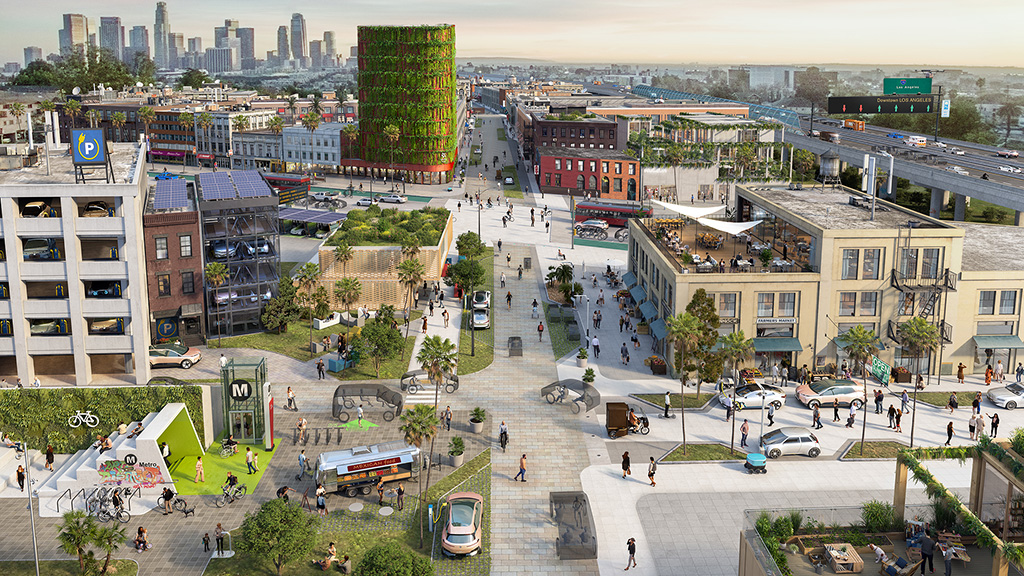Innovations in Mobility Design Are Paving the Way for More Resilient Cities
April 30, 2024 | By Andy Cohen and Diane Hoskins
Editor’s Note: The following excerpt is from Design for a Radically Changing World, by Gensler Global Co-Chairs Diane Hoskins and Andy Cohen.
For the first time since the gas-powered automobile was invented, a fossil-free mobility future is within reach. In the near term, gas-guzzling cars will no longer be people’s go-to transportation selection — and rightfully so, for car owners use their vehicles, on average, only 5% of the time. The rest of the time, these cars are sitting idle and taking up space in garages and parking slots. In the future, more and more people will utilize autonomous vehicles (AVs), electric vehicles (EVs), and micromobility services, in conjunction with mass transit.
EVs belong to a radically different ecosystem of consumer electronics, computers, data, electric infrastructure, batteries, solar fields, and wind turbines. They can be technology platforms that serve as the brains of our future buildings or act as data and energy wallets, allowing us to trade either data or energy as we move about our communities. The smart computing power of our EVs and AVs not only will help us optimize our personal transportation and mobility patterns but also will affect personal energy and data usage and potentially even power the smart entertainment and data systems of our homes.

Solutions to mobility can also act as a great equalizer. Insufficient mobility infrastructure is too often a gatekeeper, preventing movement in and around our cities as decades of automobile centric planning have choked roads and hindered urban dwellers who desire modernized public transportation and greater neighborhood walkability. Worse, many city residents face the dual challenge of neither owning a car nor having ready access to public transportation. When they need groceries, a ride to work or school, or even a potentially lifesaving vaccine, they simply do not have an easy way to get where they have to go. As designers, we must make it our mission to create opportunities that extend beyond traditional economic circles of influence into these neglected spheres.
The advantages of thoughtfully designed mobility are profound. Design can eliminate barriers of accessibility and reduce the impact of unaffordable or unfair housing practices responsible for driving disadvantaged residents farther away from urban cores. It can unlock equitable access to opportunity and essential services, connecting us with education, healthcare, food, and culture. In addition to these economic and accessibility benefits, multimodal infrastructure, anchored by strong public transportation systems, has an outsized impact on reducing carbon emissions and contributing to cleaner, less polluted cities. All these developments, in conjunction with the unprecedented technology to which designers of transportation enhancements have access today, position mobility as a frontier ripe for design innovation.
At a larger scale, we are also witnessing a time of transformation in the world of airports and transportation hubs. Historically, airports were designed as systems for moving planes and baggage efficiently first; the passenger experience was often an afterthought. Post-9/11 security enhancements only exacerbated the unpleasant aspects of travel. But today, airports and other major transit hubs are recognized as crucial gateways to our city and being redesigned accordingly.
For media inquiries, email .


